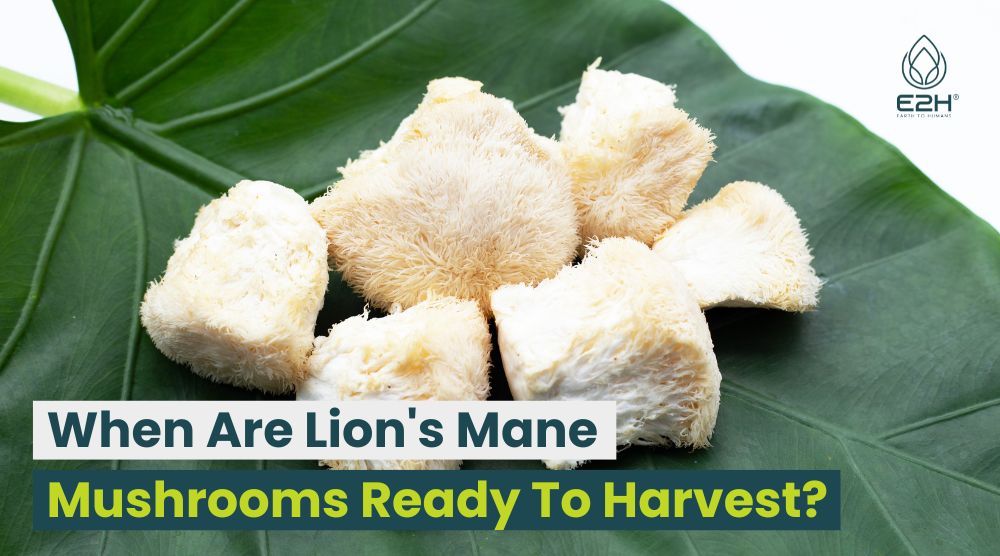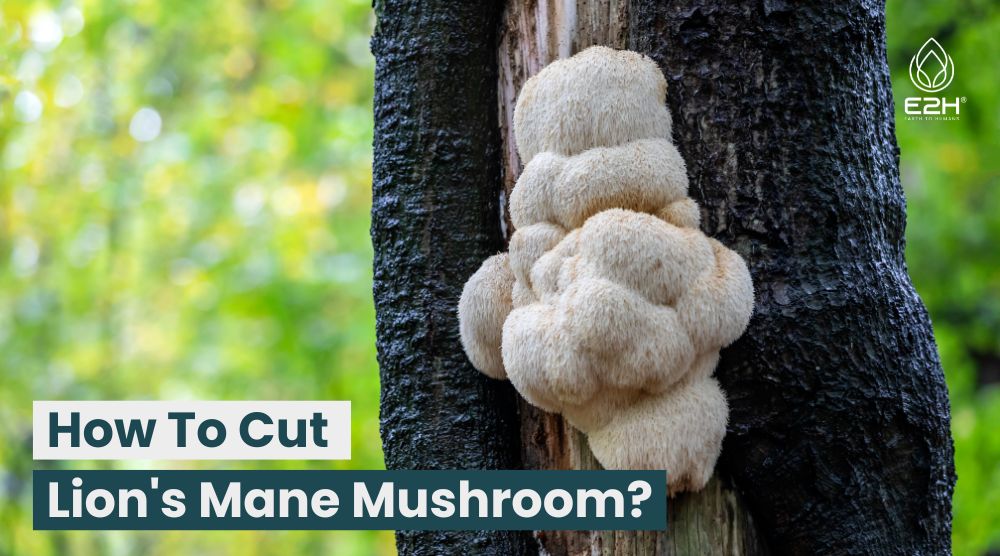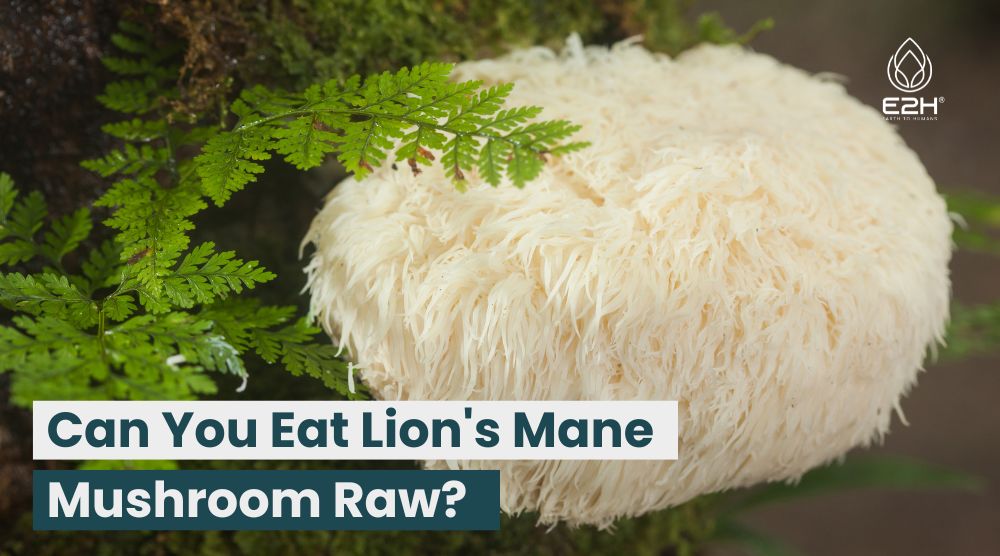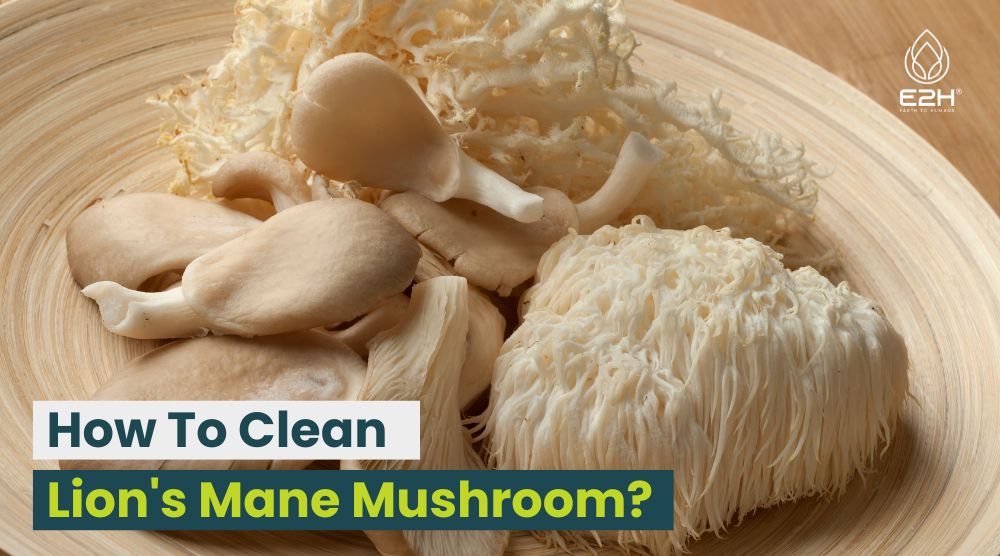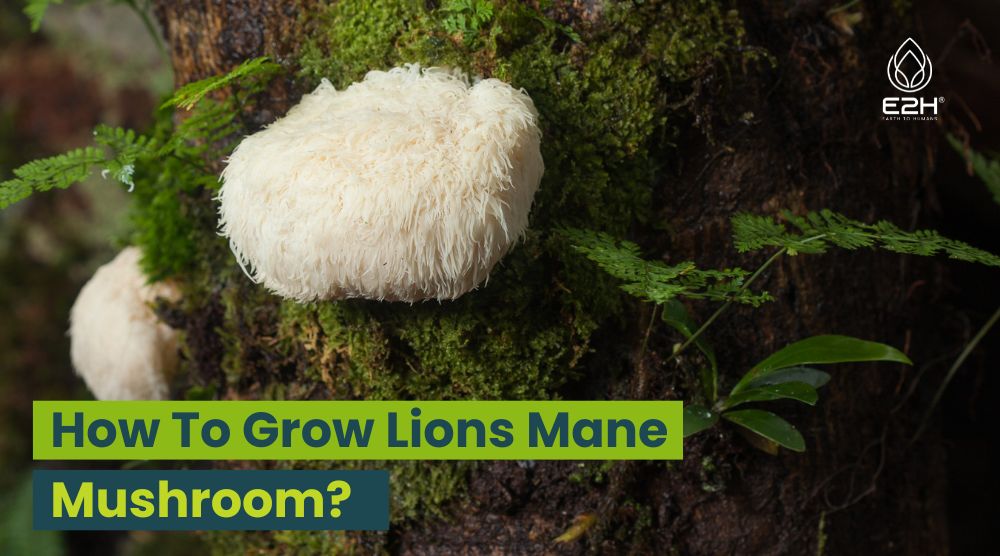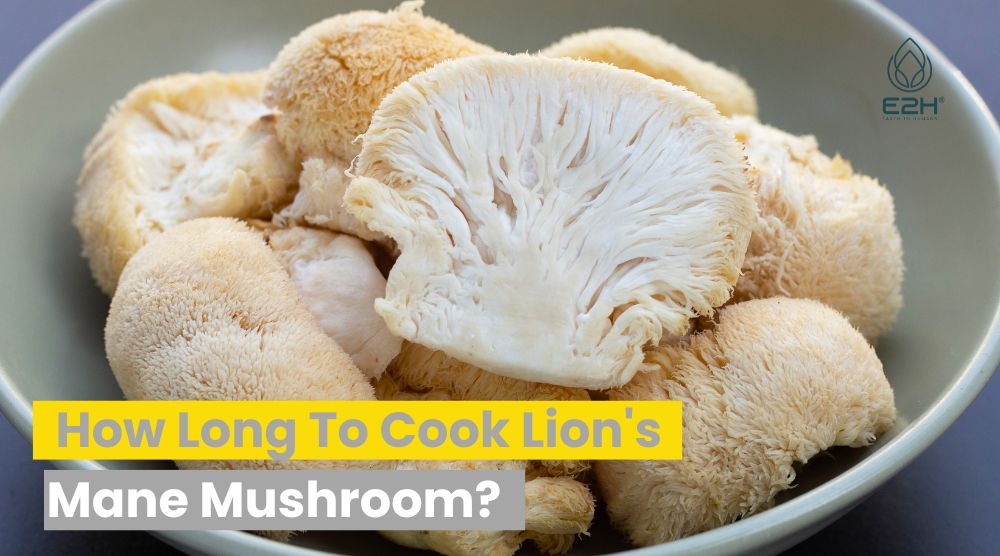When are lion’s mane mushrooms ready to harvest: Lion’s Mane mushrooms are ready to harvest when their tendrils are full, fluffy, and about 3-6 inches in diameter. Look for a white to slightly yellowish coloration and a distinctive lion’s mane appearance.
Understanding Lion’s Mane Growth Stages
Lion’s Mane Mushroom Life Cycle
Before diving into the specifics of harvesting, it’s crucial to understand the life cycle of Lion’s Mane mushrooms. This cycle consists of several key stages, including mycelium development, primordia formation, and fruiting body maturation.
Mycelium Development
The journey begins early fall, with mycelium, the vegetative part of the fungus. This web-like structure colonizes the growing medium, breaking down nutrients and preparing for the next phase. Patience is key during this stage, as mycelium growth sets the foundation for healthy fruiting.
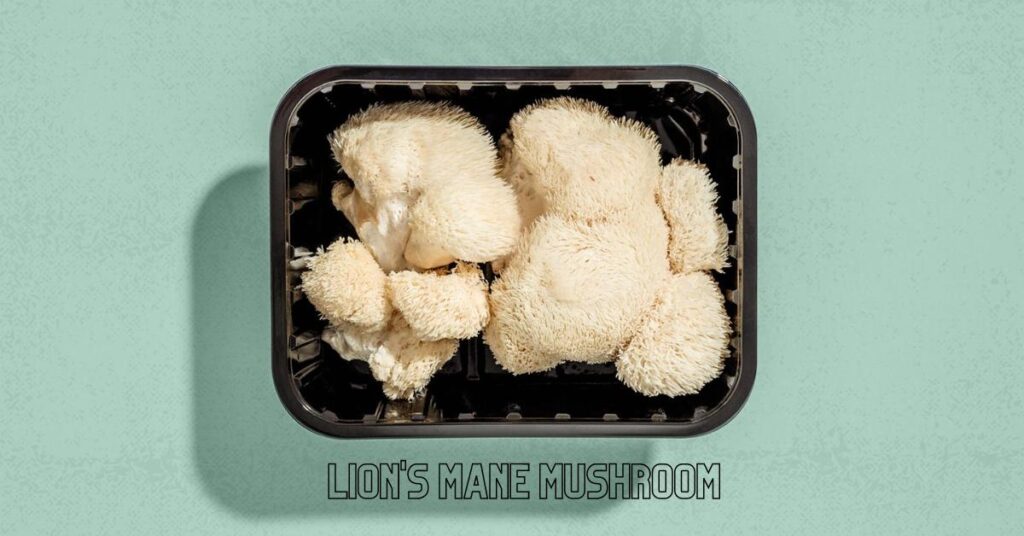
Primordia Formation
Primordia are tiny pin-like structures that mark the transition from mycelium to actual mushroom formation. These small knots are indicators that your Lion’s Mane mushrooms are on the right track.
Fruiting Body Maturation
The most awaited stage is the maturation of the fruiting bodies. This is when the lion’s mane appearance starts to emerge, with cascading tendrils resembling a lion’s mane. But how do you know if they are truly ready for harvest?
Factors Affecting Harvest Readiness
Environmental Conditions
Creating the ideal environment for Lion’s Mane mushrooms is vital for a successful harvest.
Temperature and Humidity
Maintaining the right temperature and humidity levels is crucial. Lion’s Mane mushrooms thrive in cooler temperatures, typically between 55-75°F (13-24°C). Humidity levels around 90% during the fruiting stage create an environment conducive to mushroom growth.
Fresh Air Exchange
Proper air circulation is necessary to prevent the growth of contaminants and ensure healthy mushroom development. Fresh air exchange mimics the natural conditions that Lion’s Mane mushrooms prefer.
Light Exposure
Unlike plants, mushrooms don’t require direct sunlight, for photosynthesis. However, some light exposure, preferably indirect and ambient, can help with the development of fruiting bodies.
Signs of Harvest Readiness
Size and Appearance
Lion’s Mane mushrooms grow rapidly during their maturation phase. When they reach a size of about 3-6 inches in about about a week in diameter, it’s a good indicator that they’re approaching harvest readiness.
Fullness and Fluffiness
The tendrils of Lion’s Mane mushrooms should be full and fluffy. They should resemble a lion’s mane, with cascading “icicles.” If the tendrils are tightly packed and robust, it is fresh lion’s mane, a positive sign.
Coloration
The color of the Lion’s Mane mushrooms is another hint of their readiness. A pure white coloration usually indicates that they are not yet fully mature. As they mature, they might develop a slightly yellowish golden brown tint.
Harvesting Lion’s Mane Mushrooms
Tools Needed
Gathering all the equipment and right tools before harvesting is essential to ensure a clean and successful process.
Harvesting Technique
To harvest Lion’s Mane mushrooms, gently grasp the base of the cluster and twist it clockwise or counterclockwise. The cluster should detach easily from the substrate.
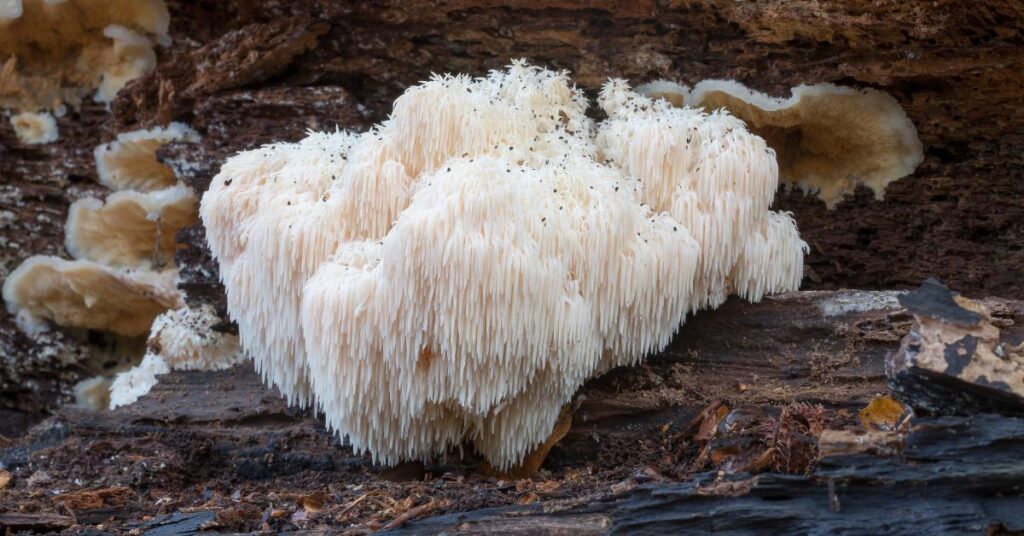
Avoiding Damage
Handle the mushrooms delicately to avoid damaging the delicate tendrils. Bruising can affect their appearance and texture.
Harvesting Frequency
Multiple Flushes
Lion’s Mane mushrooms are known for their ability to produce multiple flushes. After the first harvest, continue to mist and maintain proper conditions for potential subsequent harvests.
Timing between Flushes
The time between flushes can vary, as much air but it’s common to see a new flush every few weeks. Patience is key, as the mycelium needs time to recover and generate new primordia.
Post-Harvest Care
Cleaning and Trimming
After harvesting, gently clean the Lion’s Mane mushrooms with a soft brush or damp cloth. Trim any tough or discolored parts before consumption.
Storing Lion’s Mane Mushrooms
For short-term storage, place the mushrooms in a paper bag and refrigerate. To extend their shelf life, consider drying or cooking the mushrooms starting using them.
Utilizing Fresh and Dried Mushrooms
Lion’s Mane mushrooms can be enjoyed fresh in various dishes, including sautés and stir-fries. If drying, use a dehydrator or low-temperature oven to preserve their flavor and nutrients.
Common Mistakes to Avoid
Harvesting Too Early
Impatience can lead to harvesting Lion’s Mane mushrooms prematurely. Wait until they reach a substantial size and display the characteristic cascading tendrils.
Waiting Too Long
On the other hand, waiting too long to harvest can result in overripeness. The tendrils might become overly tough and lose some of their delicate flavor.
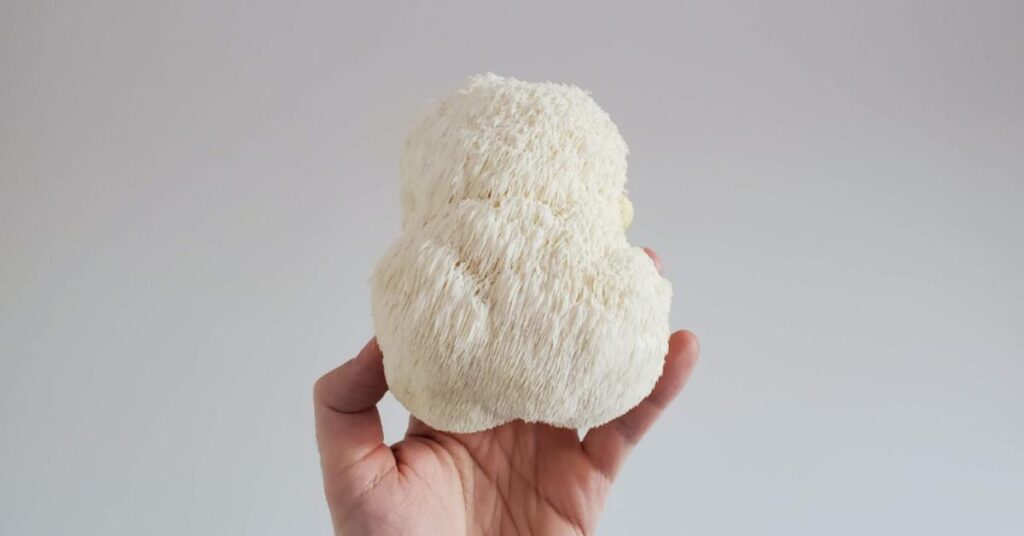
Mishandling Mushrooms
Rough handling grow mushrooms can lead to bruising and damage. Treat these mushrooms with care to maintain their unique appearance.
How do you know if Lion’s Mane mushrooms are still good?
The freshness of Lion’s Mane mushrooms can be assessed through visual and tactile cues. Look for vibrant white coloration and firm, plump tendrils. A slight dampness is acceptable, but any signs of sliminess or darkening could indicate spoilage. Also, give it a gentle sniff; a mild, pleasant mushroom aroma is good, while any unpleasant or pungent odor suggests spoilage. If the mushroom passes these tests, it’s still good to use.
How do you know if a Lion’s Mane is mature?
Maturity in Lion’s Mane mushrooms is indicated by their size, appearance, and tendrils. A mature Lion’s Mane typically reaches a diameter of 3-6 inches, and its tendrils are full and cascading, resembling a lion’s mane. Additionally, the color may transition from pure white to a slight yellowish hue as it matures. A tactile test gentle pressure can also reveal the mushroom’s readiness; if it or fresh lion’s mane mushrooms are firm yet yields slightly, it lion’s mane grows likely ready for harvest.
Can you eat Lion’s Mane raw?
Yes, you can consume Lion’s Mane mushrooms raw, but cooking them is recommended. Cooking not only enhances their flavor and aroma but also breaks down tough cell walls, making them more digestible. Sautéing, roasting, or adding them to dishes like salads are popular cooking methods that bring out their unique taste and texture.
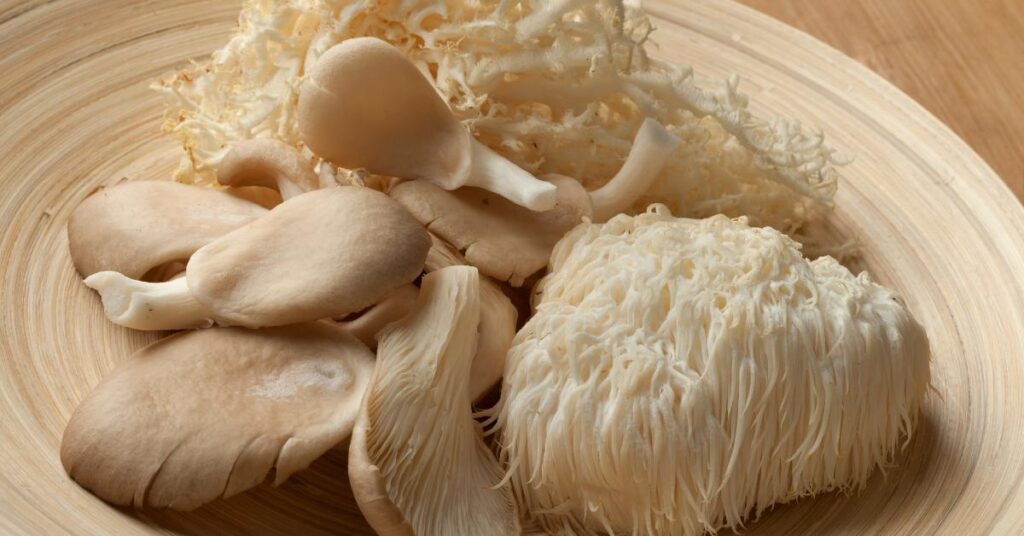
What types of wood are recommended for growing lion’s mane mushrooms using plug spawn or sawdust spawn?
For growing lion’s mane mushrooms using plug spawn or sawdust spawn, North Spore recommends using hard maple, beech, or hornbeam wood. These types of wood provide an optimal substrate for the lion’s mane mushroom mycelium to colonize and thrive. While other types of wood can also be used, hard maple, beech, and hornbeam are considered the best choices due to their favorable characteristics that support the growth and development of the lion’s mane mycelium mushrooms.
When to Harvest Your Lion’s Mane Mushrooms?
FAQs For Lion’s Mane Mushrooms Ready To Harvest
Can I grow Lion’s Mane mushrooms indoors?
Absolutely! Lion’s Mane mushrooms can be cultivated indoors with proper temperature, humidity, and fresh air exchange.
What if my mushrooms turn brown after harvesting?
Browning might occur due to oxidation. Trim the affected parts and use the remainder of the mushroom.
Are there any look-alike mushrooms I should be cautious of?
Yes, there are some wild mushrooms resembling Lion’s Mane. Always source mushrooms from reliable suppliers or experts.
Can I eat Lion’s Mane mushrooms raw?
While you can eat them raw, cooking Lion’s Mane mushrooms brings out their flavor and makes them more digestible.
Are there any medical benefits associated with Lion’s Mane mushrooms?
Lion’s Mane mushrooms have been studied for potential cognitive and neurological health benefits only, but consult a healthcare professional before using them for medicinal purposes.
Conclusion
Harvesting Lion’s Mane mushrooms is a rewarding experience that requires careful observation and a touch of patience. By both growing mushrooms and understanding their growth stages, environmental needs, and signs of readiness, you can enjoy these culinary and potentially healthful wonders at their peak. Whether you’re a novice or an experienced cultivator, the journey from mycelium to magnificent your own lion’s mane mushrooms is an awe-inspiring process that connects us with the fascinating world of fungi.
